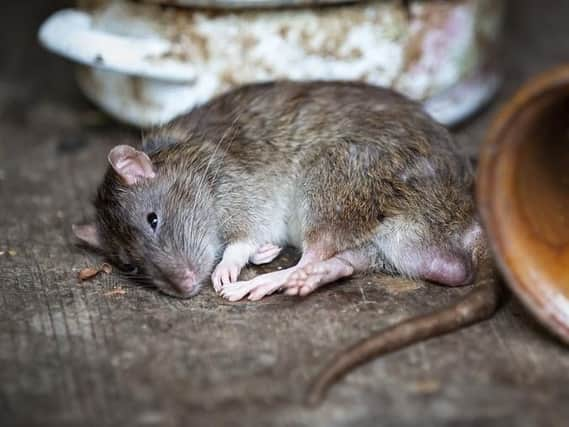8,300 pest control calls in Leeds over just two years


According to statistics sent to Datamill North, a total of 8,322 requests for services to deal with pests, including insects, flies rodents and birds, were sent to Leeds City Council during 2017 and 2018.
The data was also broken down by ward, and listed Gipton and Harehills as having the highest number of requests with 573, while Garforth and Swillington was tied with Hunslet and Riverside as having the lowest, with 94 total requests each.
Advertisement
Hide AdAdvertisement
Hide AdThe biggest individual pests were rats, with total requests relating to rat problems both indoors and outdoors in commercial and residential property reaching 3,600 during the two-year period.
Killingbeck and Seacroft had the highest number of requests, at 290, while Wetherby had the lowest at 38.
The most common species of rat in Britain, Rattus Norvegicus, is commonly known as the Brown Rat or Common Rat.
According to the British Pest Control Association, brown rats live in any environment that provides food, water and shelter. In homes, they will live in roof spaces, wall cavities or under floorboards.
Advertisement
Hide AdAdvertisement
Hide AdThese typically weigh more than half a kilogram, and can spread diseases such as lyptheria and salmonella through their urine.
Although the figures suggest pest problems are much more prominent in inner-city areas, there were exceptions to the rule.
Requests to deal with airborne insects, including bees, beetles, fleas, flies, moths and wasps hit the 2,180 mark over the two year period.
As many of these related to wasps and bees, many of the wards with higher numbers of requests were in leafier, suburban areas, with Alwoodley topping the list at 142 requests. Only 10 requests were made to Hunslet and Riverside.
Advertisement
Hide AdAdvertisement
Hide AdHowever, non-airborne insects, such as ants, silverfish and cockroaches were starkly prominent in inner-city areas with large amounts of older housing, with Gipton and Harehills; Burmantofts and Richmond Hill; and Middleton Park wards making the top three, with more than 300 requests between them. In contrast, Guiseley and Rawdon; Ardsley and Robin Hood; and Morley North each saw fewer than 10 requests made during the two-year period.
A spokesman for Leeds City Council said: “(We) operate a comprehensive pest control service which responds to issues at both residential and commercial properties across the city and we would expect areas with higher population density to be the subject of a higher number of calls.
“We aim to respond to any reports from residents within 48 hours and would urge anyone experiencing issues with pests to contact us wherever they live on 0113 2224406.
“Full advice on how to contact us and information on common household pests can be found at: https://www.leeds.gov.uk/residents/environmental-health/pest-control.”
Advertisement
Hide AdAdvertisement
Hide AdAccording to its website, Leeds City Council charges £60 a time for dealing with pests such as ants, bedbugs, fleas, bees, flies, silverfish, woodlice, moths and wasps.
Charges for dealing with moles, mice and rats in private properties stands at £85, while cockroach problems are £90, and squirrel removal stands at £100.
Pest control on rats for Housing Leeds tenants is free of charge. The council also has a policy of free re-treatments if they are needed within 28 days.
On the risks pests cause to homes and businesses, the BPCA states: “Insects, rodents and birds can easily contaminate food and work surfaces with their excreta, hairs or body parts.
Advertisement
Hide AdAdvertisement
Hide Ad“These are potential pathogens that spread disease. Parasites carried by pest species can also be passed on to humans causing illness and stress.
“If you followed a fly for a day, you wouldn’t want to eat for a week.”